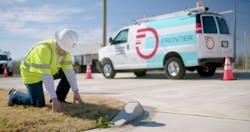Frontier sees broadband deployment savings potential in self-installs
Frontier wants to change how customers activate fiber-based broadband service. Instead of waiting for the technician to show up, the telco recently introduced a self-installation option that allows customers to set up high-speed fiber internet at their convenience.
When Frontier acquires a new customer, it must install an optical network terminal (ONT) and set them up to access the network. As the base of installed fiber customers grows, when people move out of an existing connected home and somebody else moves in, the self-install process becomes easy for a consumer.
Speaking to investors during Frontier's second-quarter earnings call, Scott Beasley, the company's CFO, said it benefits the telco by enabling it to reduce truck rolls and connection costs.
“As we've said before, the target range for the cost to connect is $600 to $800 per connection. “We're at the higher end of the range now, but with self-install, unlocking a much bigger portion of our customer base for self-install, that should reduce costs.”
He added that the self-installation could help Frontier save costs in 3 areas.
“You no longer have to do a drop; the ONT is already in the house, and you no longer have to send a technician,” Beasley said. “Those cost improvements will bring us down overall, much closer to the low end of the range, potentially even below that low end over time.”
Fiber growth continues
Frontier’s self-install movement occurs when its fiber broadband subscriber base continues to rise.
During the second quarter, Frontier increased its total fiber broadband customers by 19% year over year, up more than 60% since the end of 2020.
Consumer fiber broadband customer net additions of 90,000 resulted in consumer fiber broadband customer growth of 19.2% year-over-year.
The growth of fiber subscribers drove up consumer revenue by 1.8% year-over-year to $789 million, increased 1.8% year-over-year. However, the company still saw fiber growth, partly offset by declines in copper.
Consumer fiber revenue of $523 million increased 13.2% year-over-year as declines in video and voice partly offset broadband growth. Likewise, consumer fiber broadband revenue of $393 million increased 22.8% year-over-year, driven by growth in both fiber broadband customers and ARPU.
“In our base fiber footprint of 3.2 million locations, our penetration rose 190 basis points year-over-year to 45.3%,” Beasley said. “Since we started our turnaround more than three years ago, we have targeted terminal fiber penetration of 45% or better, which is an important indication that the goal is achievable.”
He added, “We are still growing our customer base in these mature markets, even in the face of legacy cable competition and fixed wireless availability, and we see room for our base penetration to climb even higher.”
Ramping the fiber build
Frontier continues to stay on target with its fiber build-out pace.
During the quarter, Frontier added 388,000 fiber passings.
Beasley said Frontier remains “on track to achieve our goal of 1.3 million passings this year.”
Nick Jeffery, CEO of Frontier, agreed and added that its fiber business is one part of a four-part strategy: build fiber, sell fiber, improve service for all of our customers, and increase our operational efficiency.
“In 2021, we set an initial target to pass 10 million locations with fiber,” he said. “And this quarter, we exceeded 7 million passings in total. We now have nearly twice as many passings as the next closest pure-play fiber provider and have significantly more than the long tail of smaller fiber providers.”
Healthy ARPU
Frontier’s consumer fiber broadband ARPU remained strong in the second quarter, rising 3.5% yearly to $65.32.
Likewise, the consumer fiber broadband customer churn is 1.40% compared to 1.41% in the second quarter of 2023. This was in line with Frontier’s long-term target range of 3% to 4%.
Beasley noted that Frontier’s ARPU growth is related to three main themes: faster customer speed tiers, annual price adjustments, and expanding value-added services.
“In Q2, over 60% of new customers took speeds of 1 gig or faster, and over 50% purchased at least one value-added service, including products like YouTube TV and whole-home Wi-Fi,” he said.
Looking forward to the third quarter, the FCC’s ending of the Affordable Care Plan (ACP) will affect the third-quarter APRU. Due to a lack of additional funding from Congress, the ACP has ended.
“We’re delivering very healthy growth in ARPU,” he said. We do expect Q3 to be roughly flat sequentially as we work through the ACP transition plans, particularly the 200-meg plan. But then we expect more of an ARPU pick-up in Q4 to end the year right in line with the 3% to 4% range that we've given as our long-term target.”
He added that while it had a higher mix in “Q2 and expects Q3 to be on some of the lower end, what we call the ACP transition plans of 200 meg, by Q4, we expect most of that transition to be complete and then our sequential ARPU to be growing again nicely, thus putting us on target for that 3% to 4% range by the end of the year.”
For related articles, visit the Broadband Topic Center.
For more information on high-speed transmission systems and suppliers, visit the Lightwave Buyer’s Guide.
To stay abreast of fiber network deployments, subscribe to Lightwave’s Service Providers and Datacom/Data Center newsletters.
About the Author
Sean Buckley
Sean is responsible for establishing and executing the editorial strategy of Lightwave across its website, email newsletters, events, and other information products.



